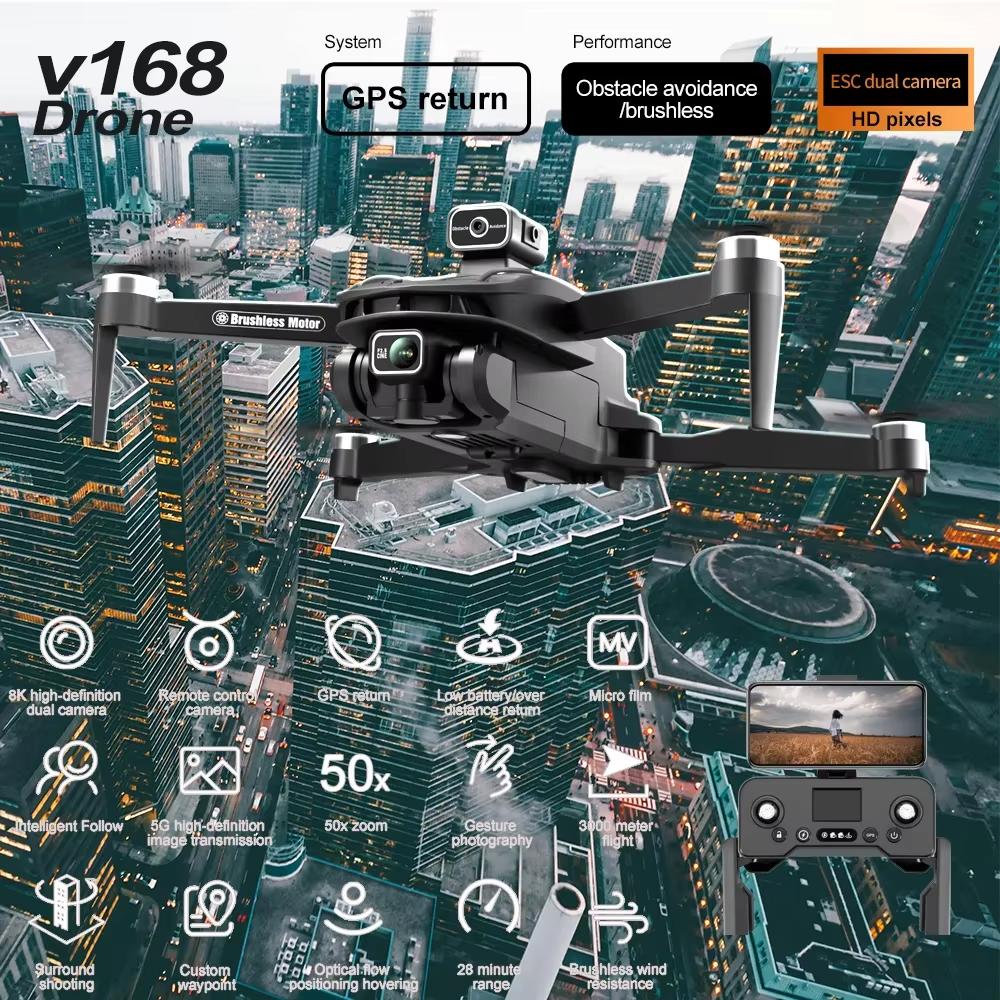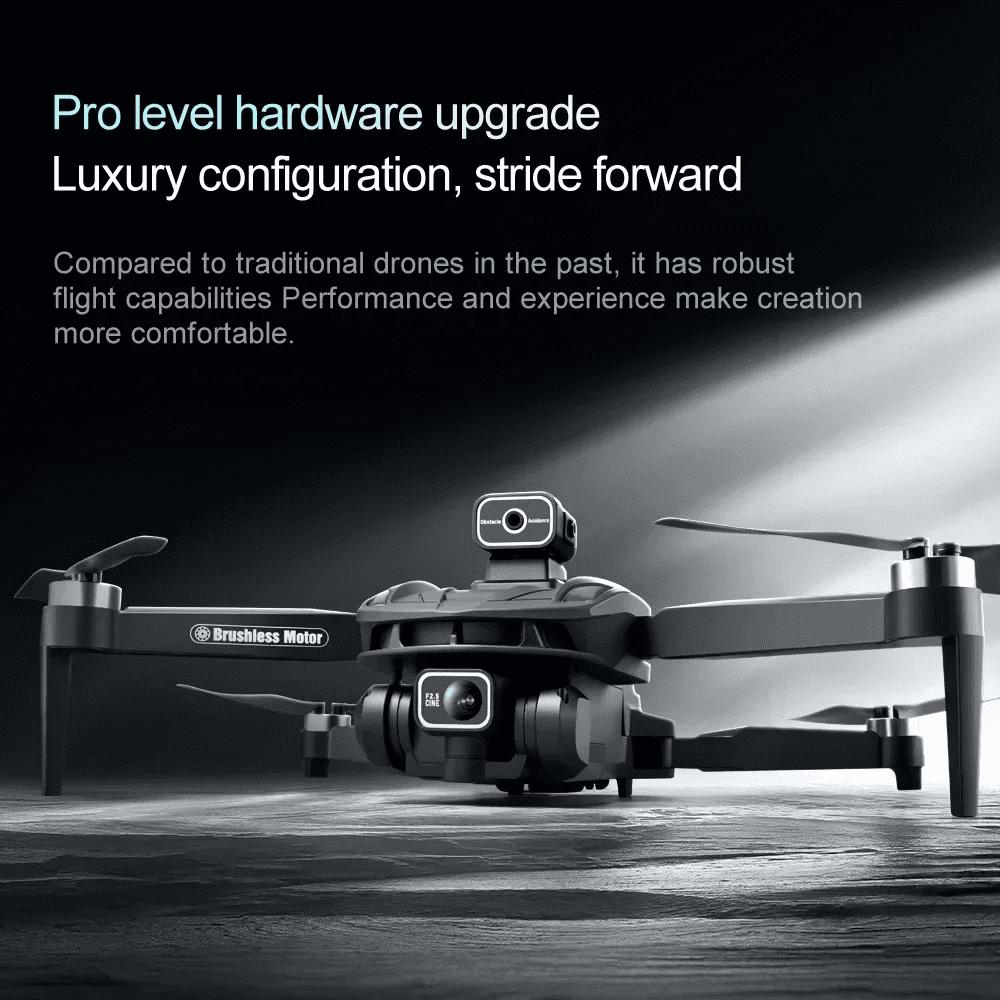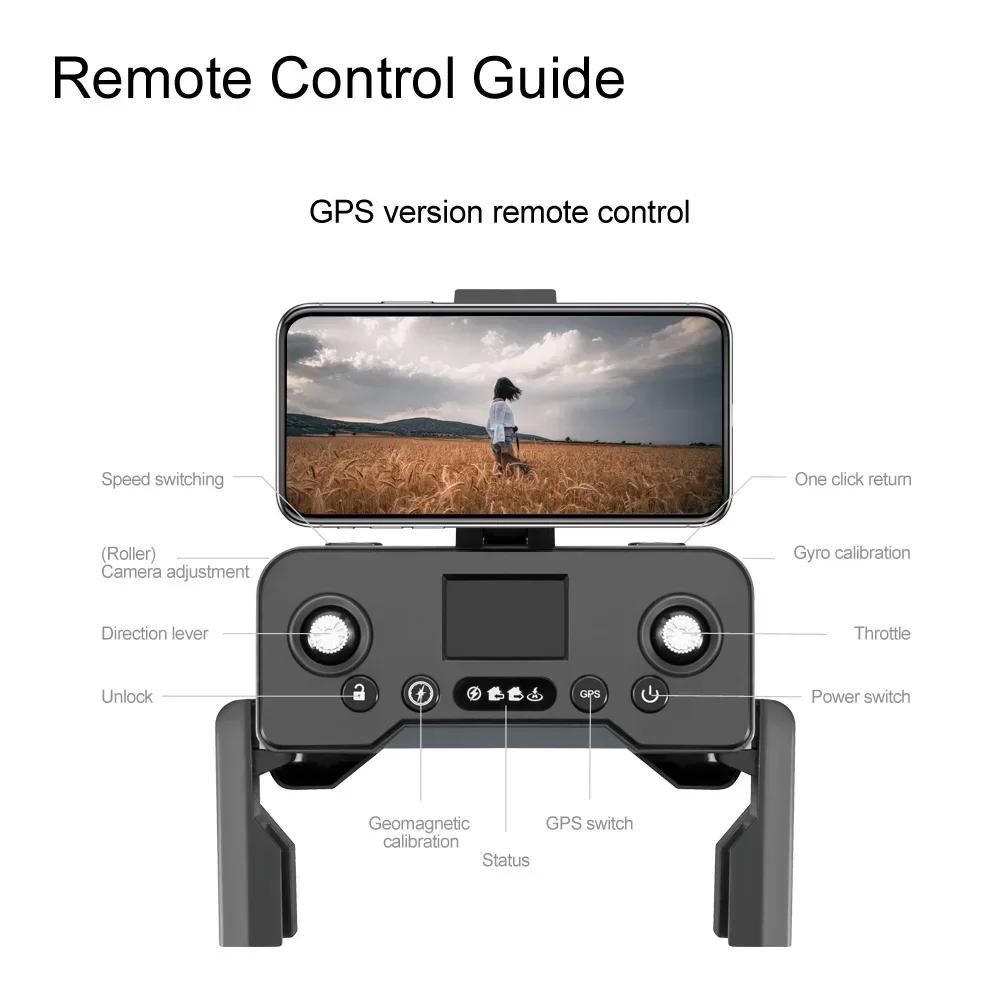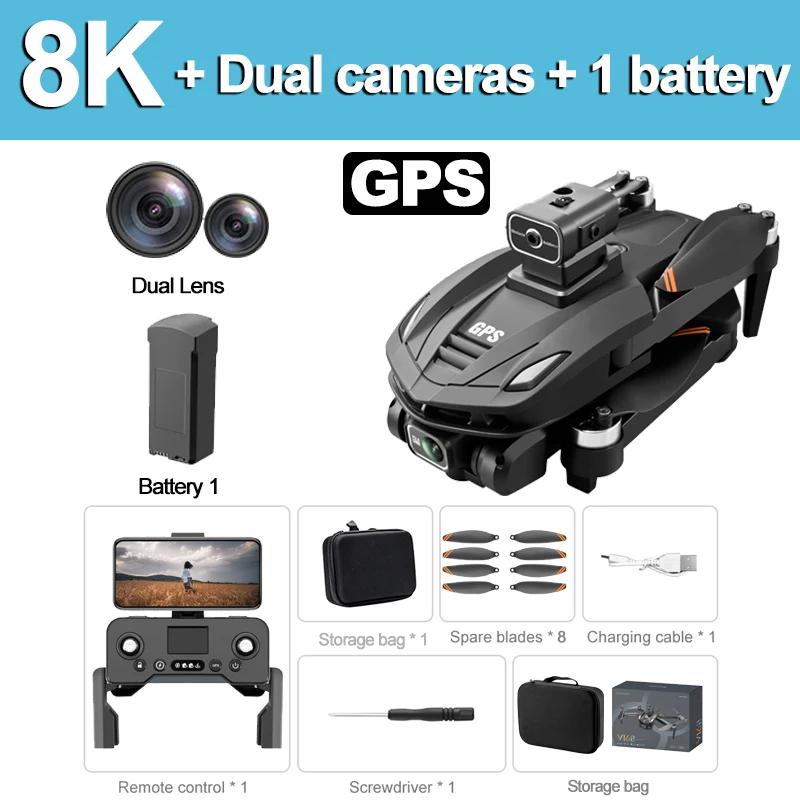Note: Some models have GPS, some do not, please choose carefully! The battery life and remote control distance of the GPS version are much longer than the ordinary version!
-Before using, please read the product manual carefully, he can solve more than 95% of the operational problems you need to know.
First flight indoors is prohibited:
1.It is forbidden to choose (indoor) environment with many obstacles for the first flight.
2.Please make your first flight outdoors in an open environment.
3.You may choose a flying site after you have become proficient in the operation of the airplane.
Package Includes:
-UAV * 1
-Remote control * 1
-Body battery * 1
-USB cable * 1
-Screwdriver * 1
-Spare blade * 4
-Manual * 1
-App Manual * 1
-Storage bag * 1
Note:
GPS 8K (1080p) HD camera pixel: 1920×1080
8K (720p) HD camera pixel: 1280×720
6k (480p) HD camera pixel: 720*480
-Aerial Function:
Frequency: 5G (GPS) 2.4G (no GPS)
-With foldable arms, compact and easy to carry.
-GPS positioning mode can provide more accurate flight./ The no-GPS version is optical flow positioning.
-With 5G wifi function, can connect to APP, APK system to take photos/videos and transmit images in real time through mobile phone camera/The non-GPS version is 2.4Gwifi
-5G WiFi fpv distance can reach 1000M. / The non-GPS version is 300M.
-5G WiFi 4K HD / 5G WiFi 6K HD / 5G WiFi 8K HD camera can provide various HD images and videos.
-With altitude hold mode function to provide stable flight.
-Orbital movement will allow the aircraft to fly in circles, providing cooler camera angles.
-Waypoint flight mode, simply draw a route on screen with the helicopter as the given path.
-Flight time of up to 22-25minutes / The no-GPS version is 15-18 minutes.
-No need to adjust the position of the aircraft before flight.
-One-touch return function, you can easily find your way home.
-One-touch take-off/landing. One button auto take-off or landing, the drone will automatically take off or return to the take-off position. (The no-GPS version does not have this function)
-With low power protection over current protection.
-Interference immunity using 2.4GHz technology.
- 4channels, can fly up, down, forward, backward, left and right.
-Six-axis gyroscope for more stable flight and easier control.
-It has 3 flight speed switch levels to make flying more fun.
-The quad-rotor fuselage is made of strong, high-strength engineering plastic, lightweight and durable.
Up/down, forward/backward, left/right, lateral flight, 3 flight speed levels, LED lights, follow, surround flight, waypoint flight, altitude hold mode, headless mode , one button return, one button take off/landing, WiFi FPV, camera/video.
About the battery:
-Prolonged charging is prohibited.
-Prohibit exposure to sunlight.
-Prohibit use under high temperature.
-Prohibit disassembly.
Attention:
The batteries of the latest purchased products are all low voltage, please fully charge the batteries before use!
A. For aerial RC airplane beginners:
1. Pre-flight Preparation: Before taking off, make sure your craft has undergone a proper pre-flight check, including battery level, craft structure and controller status.
2. Find a suitable site: find an open space, no obstacles and away from the crowd, for safe initial control practice.
3. Learn the basic control: Beginners should first learn the basic control skills, including takeoff, landing, ascent, descent, left turn, right turn and other basic movements.
4. Control height: beginners should try to control the flight altitude, avoid flying the aircraft too high, so as to avoid accidents due to unfamiliar control.
5. Pay attention to the flight environment: pay attention to the flight environment and weather conditions, especially the wind and other factors. Avoid flying in bad weather or windy conditions.
6. Move slowly: When using the camera, you should move the camera as slowly as possible to achieve a more stable picture effect.
B. For professionals:
1. Optimization of internal and external equipment: Professionals may consider upgrading and improving the hardware and software of the aircraft to get better performance and accuracy.
2. Navigation and automation: Learn to use navigation and automation functions, such as GPS positioning, flight path planning, etc., to improve the efficiency and accuracy of aerial photography.
3. Learning Flight Techniques: Learn advanced flight techniques such as hovering stabilization, inverted flight, circular flight, and motion tracking according to actual needs.
4. Shooting details: High-quality shooting requires detail processing, image processing and labeling, which is more suitable for professionals, such as making 3D models or maps.
Regulations and Safety: Professionals should strictly abide by local aerial photography regulations and pay attention to flight safety to ensure the successful completion of the mission and the safe operation of the aircraft.















































